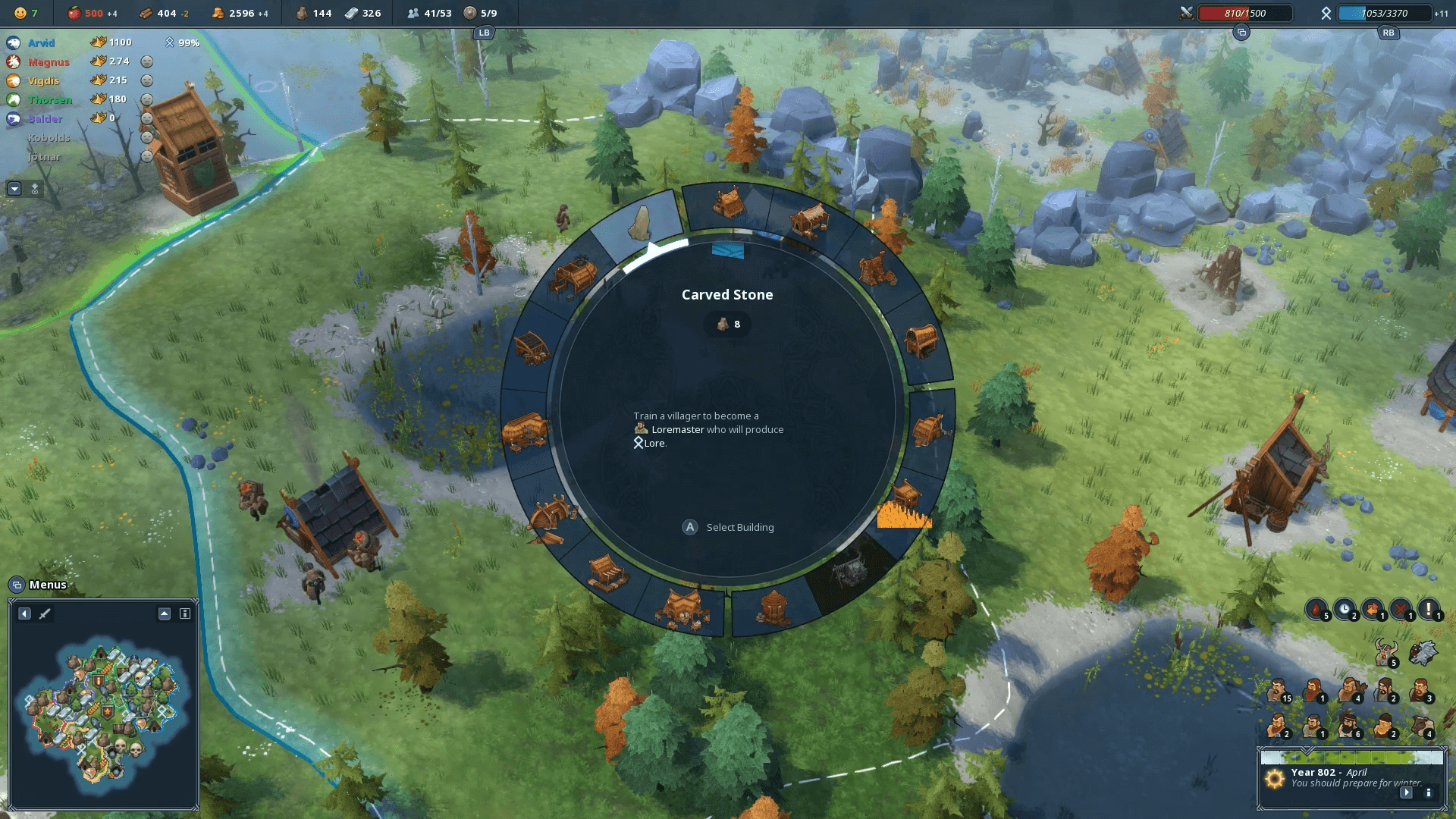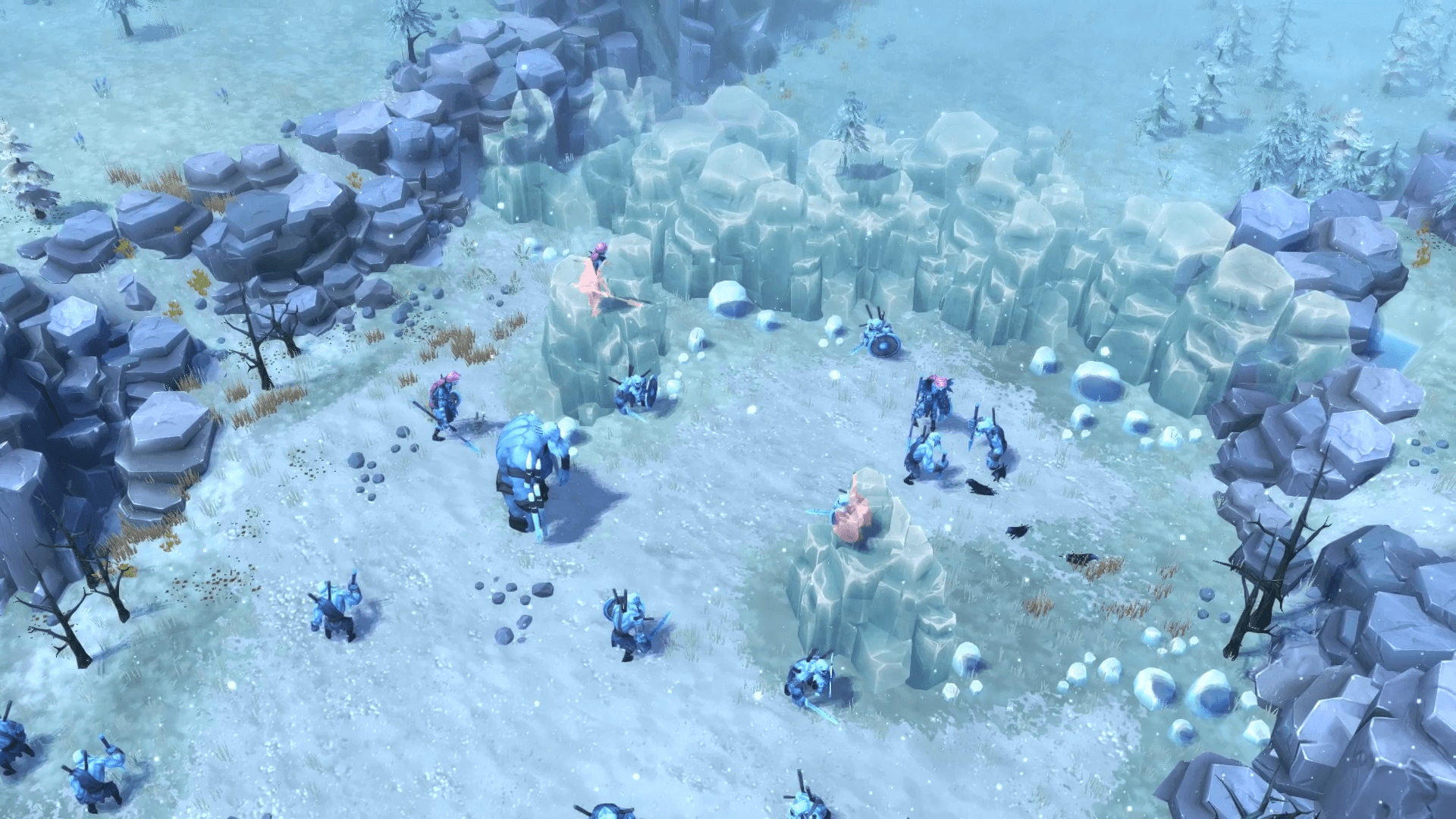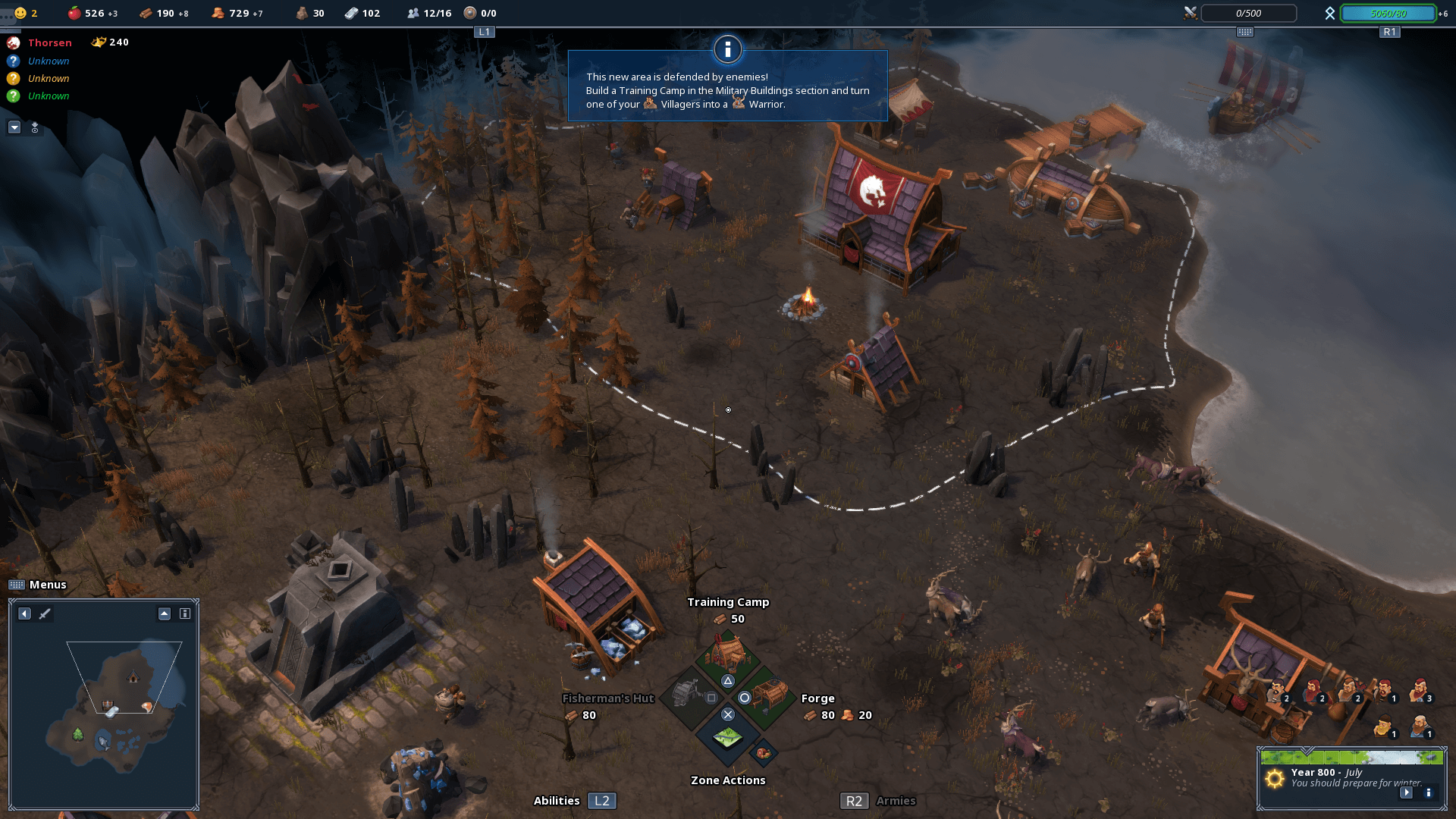Northgard — Probably the best RTS to hit Nintendo Switch
With the number of strategy games hitting Nintendo’s incredible Switch platform recently, you’d be forgiven for missing some of the more obscure entries into the market. Shiro Games Northgard is most certainly not to be missed however, and this Viking themed take on the genre may be the best example yet.
Northgard tells the tale of Generic Viking Prince Number 226. Following the untimely death of his father at the hands of his rival lord Hagen, our hero is forced to pursue a tale of revenge, economic stability and populace appeasement the likes of which has never been seen before. Or in other words, he’ll take his people to the titular Northgard, where a surprisingly broad range of quests will eventually lead to a final showdown.
Clearly this journey will be one of expansion and lessons learned, much as it always is with RTS games, but the basic elements of Northgard are delivered extremely quickly. This is helped hugely by the fantastic control system, which I think surpasses every attempt at intuitive controls previously implemented on a console.
Despite being simple to pick up and learn, Northgard is quite a tough game. You probably won’t fail the first two missions, but after that, especially considering the hard and insane difficulty modes, things escalate quickly. Even though some maps do feature aggressive objectives, Northgard is more creative than most RTS games, and players will need to make the most of some of the more unique aspects of gameplay.
Chief among the aspects that set Northgard apart is the way in which each map is split into distinct, smaller areas. Most areas have a feature, such as the capacity to grow wheat, an abundance of wood, or a treasure. Others have wolf dens or monsters of various kinds, which need to be cleared out, or sometimes, repeatedly hunted for food. When an area is clear of enemies, it can be colonised at an ever-increasing cost of food, expanding your empire in the process.
 Each area has a limit of between two and five buildings, meaning that the player (or players, if multiplayer) have to expand in order to increase the total number of buildings they have access to. Buildings, in turn, produce resources, units, upgrades and increase the population limit. Resources in Northgard include food, wood, stone, iron, happiness, fame and lore, each of which has its own purpose and value depending on the current mission.
Each area has a limit of between two and five buildings, meaning that the player (or players, if multiplayer) have to expand in order to increase the total number of buildings they have access to. Buildings, in turn, produce resources, units, upgrades and increase the population limit. Resources in Northgard include food, wood, stone, iron, happiness, fame and lore, each of which has its own purpose and value depending on the current mission.
These resources all play a factor in Northgard’s other unique selling point, which is the presence of a summer/winter cycle that takes place over each in game year. During summer, food is easier to generate and the people consume very little wood. When winter rolls around though, the use of wood increases (for fires) whilst food becomes a lot more scarce. Some missions make management of these resources their entire focus, with starvation and biting cold the deadliest enemies of all.
Players can use their ability to throw feasts periodically in order to gain a temporary boost to happiness and production, albeit at a cost of food that increases with each feast thrown. It can be valuable to boost production ahead of an upcoming winter, if you’re sure that the bonus food produced will outweigh that which is spent. On other occasions, a feast may be necessary in order to boost happiness, which is needed to ensure that your population grows.
 Another interesting feature in Northgard is that of tribal powers. We’ve certainly seen RTS games featuring leaders that have different powers or abilities, but few do this as comprehensively as it does. Each tribe has a clear focus and a set of abilities that match it, as well as their own subtly different technology trees. The Wolf Clan, for example, is a combat focussed group and can harvest meat from wolves and bears, whilst the Goat Clan is more focussed on farming and home life, and can throw a free feast each year.
Another interesting feature in Northgard is that of tribal powers. We’ve certainly seen RTS games featuring leaders that have different powers or abilities, but few do this as comprehensively as it does. Each tribe has a clear focus and a set of abilities that match it, as well as their own subtly different technology trees. The Wolf Clan, for example, is a combat focussed group and can harvest meat from wolves and bears, whilst the Goat Clan is more focussed on farming and home life, and can throw a free feast each year.
These clans are introduced over the course of a campaign that lasts for at least fifteen hours, but with several challenging missions and those three difficulty levels that I mentioned before, it’s possible to fail some missions several times. Despite the fact that losses can occur, Northgard never feels cheap, and personally I enjoyed the challenge of being forced to rethink my strategy for each of the different situations.
There is also the option to play both single and multiplayer skirmishes, and whilst I haven’t spent loads of time with these modes, I can confirm that multiplayer seems fairly solid from a technical perspective. The slightly slower pace of the gameplay works well for console multiplayer, and since Northgard isn’t a game that suits a “tank rush” style, it seems to attract more thoughtful gamers who rarely rage quit on me.
 Visually, Northgard is cute but fairly plain, and on the Switch in particular, it looks better on the small screen than it does blown up on a fifty five inch television. Personally, I am happy enough that the game runs consistently smoothly and without glitching even if it does come at a cost to visual appeal. Switch battery life when playing Northgard in handheld mode is on par with the average I’ve found across all games, with about four to five hours of constant play.
Visually, Northgard is cute but fairly plain, and on the Switch in particular, it looks better on the small screen than it does blown up on a fifty five inch television. Personally, I am happy enough that the game runs consistently smoothly and without glitching even if it does come at a cost to visual appeal. Switch battery life when playing Northgard in handheld mode is on par with the average I’ve found across all games, with about four to five hours of constant play.
Thanks to its superb controls and unusual gameplay, Northgard is the perfect fit for play on consoles, and I particularly like it on the Switch in handheld mode. It may only be an average looking game, but the deep gameplay, long campaign and number of options for replaying give it lasting appeal. Northgard is certainly one of the best console RTS games that I’ve played, and if you’re a fan of the genre, you should most certainly check it out.
Northgard is available now on PC, Mac, Linux, Xbox One, PS4 and Nintendo Switch.
Comments are closed.